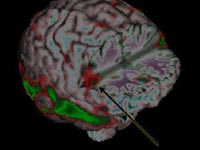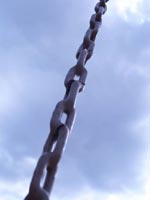 Your brain has an amazing ability to predict the future. For example, if you see someone reach for a chocolate, you can guess that they’re likely to pick it up, put it in their mouths and eat it. Like most people, you have a talent for understanding the goal of an action while you see it being performed – in this case, you know that reaching for the chocolate is only a step towards eating it.
Your brain has an amazing ability to predict the future. For example, if you see someone reach for a chocolate, you can guess that they’re likely to pick it up, put it in their mouths and eat it. Like most people, you have a talent for understanding the goal of an action while you see it being performed – in this case, you know that reaching for the chocolate is only a step towards eating it.
That may not sound very impressive, but as with many mental skills, it’s only apparent how complicated it is when you see people who can’t do it.
Autistic people, for example, find it incredibly difficult to relate to other people and this may, in part, be because they can’t understand the why of someone else’s actions. While a typical child would understand that a mother holding her hands out is readying for a hug, an autistic child might be baffled by the gesture.
Now, a new study by Luigi Cattaneo, Giacomo Rizzolatti and colleagues suggests that autistic people find it difficult to understand the purpose of an act because they cannot string together different actions into a coherent whole. And underlying this problem is a special group of nerve cells called mirror neurons.
Smoke and mirrors
Giacomo Rizzolatti discovered mirror neurons about a decade ago and they have been arguably one of the most exciting finds in neuroscience. These cells fire not only when you perform an action but when you see someone else doing the same – a case of human-see, human-do.
Scientists have suggested before that faults in the mirror neuron network are linked to autism. Some found that autistic children have less mirror neuron activity, and the parts of the brain where these cells are normally found tend to be thinner in autistics. Faults in the mirror network might render autistics unable to respond correctly to the actions of others, but Cattaneo and Rizzolatti have a different idea.
 They focus on a special group of mirror neurons in the parietal lobe that take in the bigger picture. They fire when we see a particular action, but they only fire strongly in certain contexts. One of Rizzolatti’s earlier studies found that some mirror neurons fire when someone grasps an object, but some of these only fired strongly when they then put the object in their mouths rather than in a box.
They focus on a special group of mirror neurons in the parietal lobe that take in the bigger picture. They fire when we see a particular action, but they only fire strongly in certain contexts. One of Rizzolatti’s earlier studies found that some mirror neurons fire when someone grasps an object, but some of these only fired strongly when they then put the object in their mouths rather than in a box.
These neurons don’t just tell their owner what someone else is doing, they provide a clue about why they’re doing it. They divine intention, and that’s exactly the type of skill that autistic people are bad at.
Testing the theory
To test their ability to understand intentions, Cattaneo asked seven high-functioning autistic children and 8 typical children aged 5-9 to watch an experimenter perform two simple actions. They either grabbed a piece of food and ate it, or grabbed a piece of paper and put it into a box strapped to the experimenter’s right shoulder. As they watched, he measured the electrical activity in the mylohyoid muscle that opens the mouth.
When the typical children saw the experimenter reach for the apple, this muscle became more active but reaching for the paper triggered no such response. Even when the experimenter was just reaching for the apple, the children were already aware of his final goal and their mouth-opening muscle tensed in hungry anticipation. But this didn’t happen in the autistic children – their mylohyoid muscles didn’t tense in either the apple or the paper trial.
Cattaneo repeated the experiment again but this time, he asked the children to perform the action themselves. As expected, the mylohyoid muscles of the typical children became slightly active as they reached for the food, and reached its peak as their mouths started to open.
Again, the autistic children behaved differently – their mylohyoids only became active when they brought the food to their mouths. Neither reaching for the apple, nor grabbing it, caused a twitch in the muscle.
To prove that this effect wasn’t just to do with food and mouths, the team asked the children to put a piece of food into the bin that had to be opened with a foot pedal. This time, Cattaneo and Rizzolatti measured the activity of the tibialis anterior muscle that flexes the foot at the ankle.
 When the children pressed the pedal, the muscle relaxed, and as before, typical children started relaxing the muscle when they reached for the food, but autistic children only did so when they were actually bringing the apple to the bin.
When the children pressed the pedal, the muscle relaxed, and as before, typical children started relaxing the muscle when they reached for the food, but autistic children only did so when they were actually bringing the apple to the bin.
Chaining actions
When we plan an action, our brain chains together a series of motor commands and anticipates the endpoint before we begin moving. Even simple actions like “eat an apple” can be chains consisting of links like “reach for apple”, “grab apple” and “bring apple to mouth”. The fact that a child’s mouth muscles start to tense in the first phase suggests that the brain knows what it’s doing well in advance.
According to Cattaneo and Rizzolatti, autistic children can’t string together these chains. Without the ability to foresee the goal of an action when it starts, an autistic child can work out what someone is doing, but are much hazier about why they are doing it.
Rizzolatti is quick to point out that this doesn’t mean that autistic children are at a complete loss. They could, for example, infer a person’s motivations from context or habits. But they will always have a natural disadvantage because they can’t understand someone else’s motives as if they were their own. This dysfunction could be the key to the large social problems faced by autistic children.
Reference: Cattaneo, Fabbri-Destro, Boria, Pieraccini, Monti, Cossu and Rizzolatti. 2007. Impairment of acitons chains in autism and its possible role in intention understanding. PNAS 45: 17825-17830.
Filed under: Mind and Brain, Neurons, Neuroscience, Psychology, The Brain | Tagged: , action chains, autism, mirror neurons |











[…] two picks of the issue would be two stories on Autism: Not Exactly Rocket Science reports on an experiment that is consistent with the ever-controversial idea that autism is linked with a deficient […]
Fascinating.
I wonder if this ties in to any of the common social anxieties, as well. I’d sure love to know the science behind those.